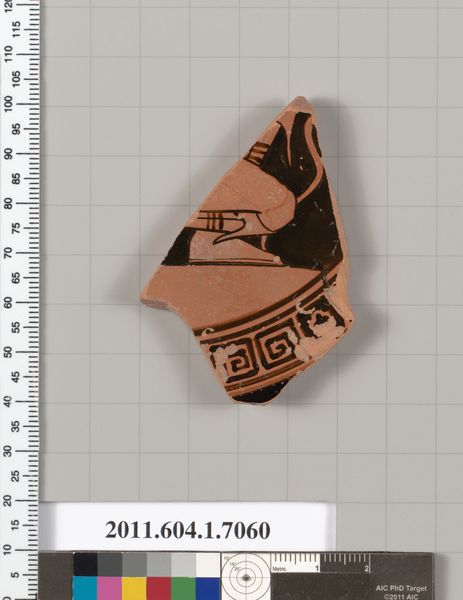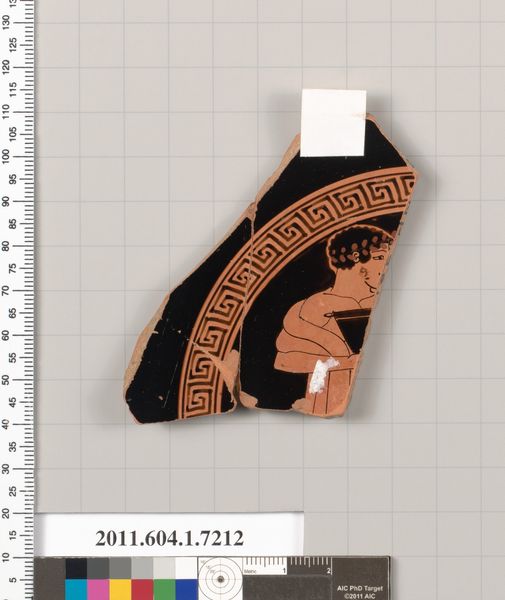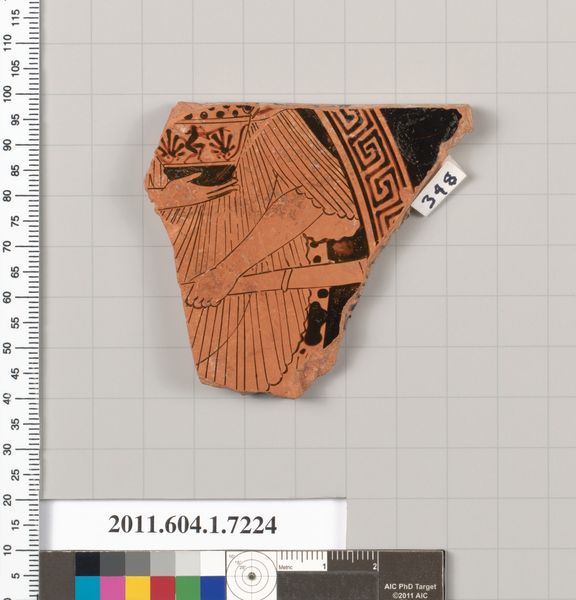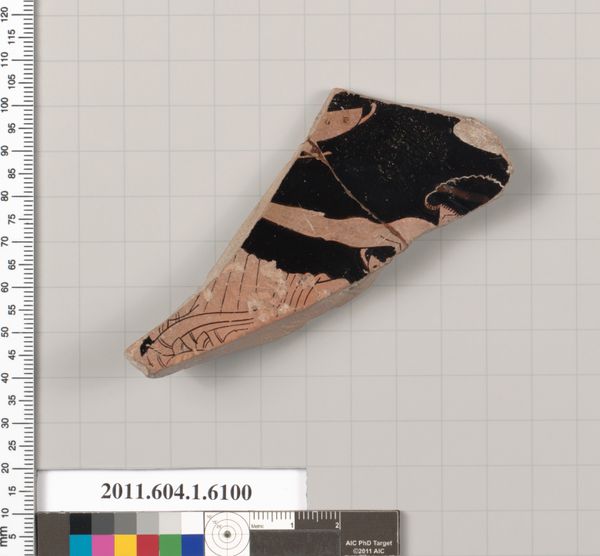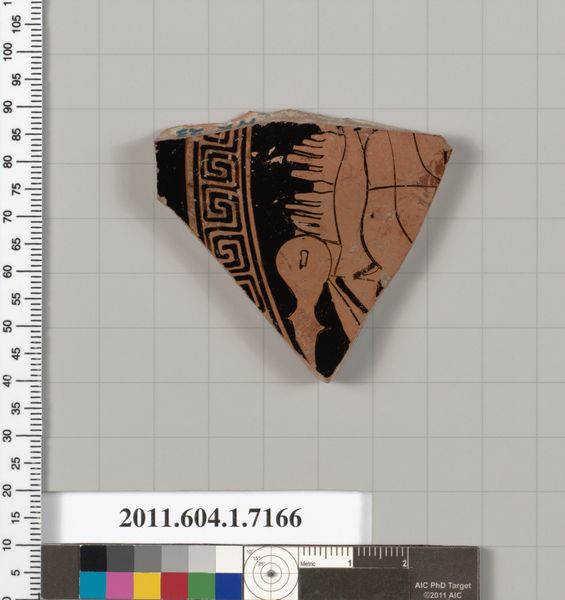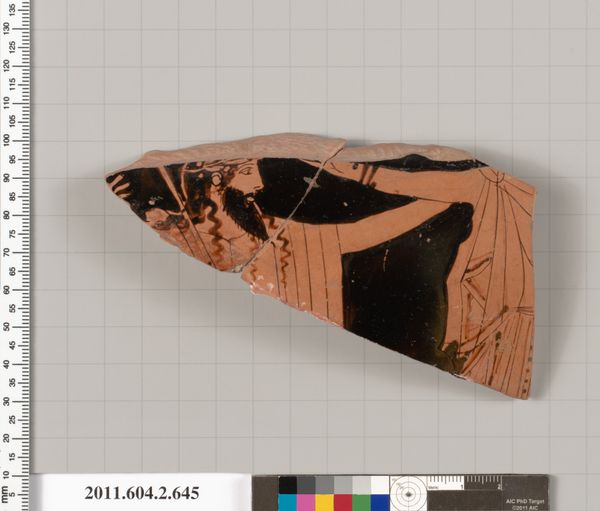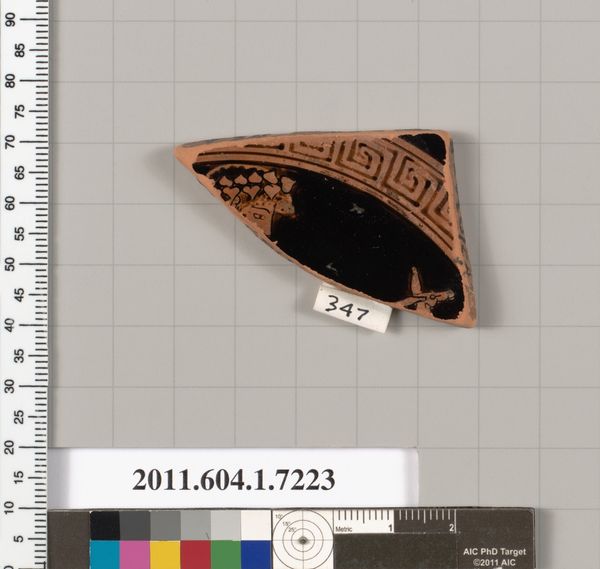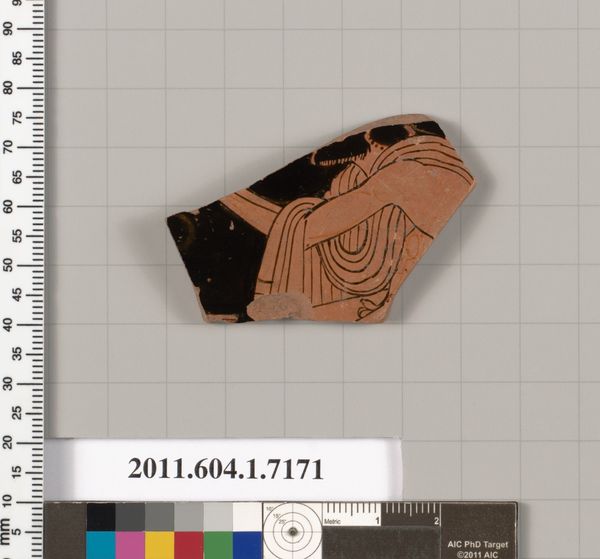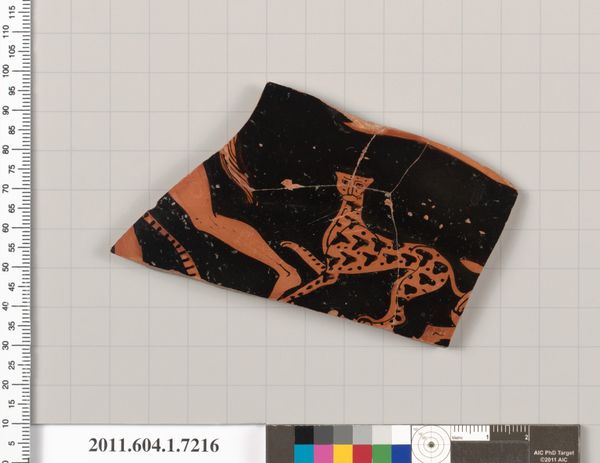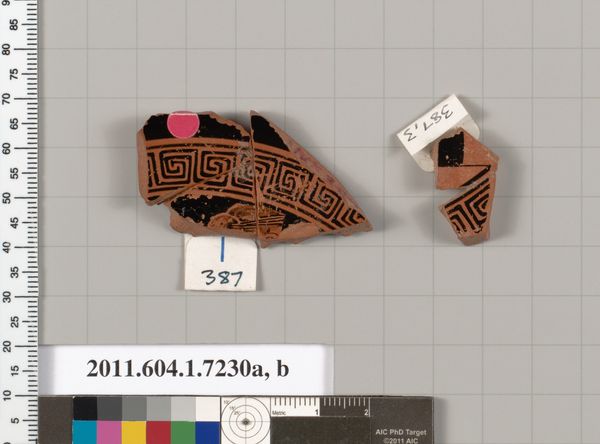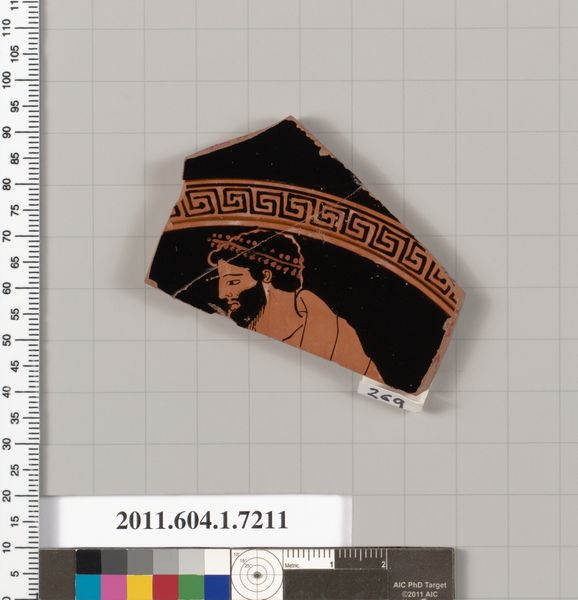
drawing, ceramic
#
drawing
#
greek-and-roman-art
#
ceramic
#
vase
#
figuration
#
roman-art
#
ancient-mediterranean
Copyright: Public Domain
Curator: Let’s consider this terracotta fragment of a kylix, a drinking cup, created around 530 BC and attributed to the artist Makron. It now resides in the collection of the Metropolitan Museum of Art. Editor: Well, right off the bat, the reddish clay juxtaposed against the stark black figure just leaps out. It feels like a whisper from a lost world. You almost expect to feel the rough texture of the clay. Curator: Indeed, the red-figure technique, where the figures are reserved in red against a black background, was a revolutionary style during that period. It allowed for finer details and a more naturalistic representation. It moved away from previous styles of only illustrating with black figures. Editor: You know, looking at it now, I feel this underlying current of social engagement. Kylixes weren't just functional, right? They were at the center of symposia, those wine-soaked gatherings where philosophical and political ideas mingled with pure hedonism. Who was using it and what kind of discussion could be taking place? Curator: Precisely. These vessels provide a lens into the aristocratic culture of ancient Greece. The imagery often reflects the values, myths, and social dynamics of the elite. Gendered space, class divisions—it’s all there if we examine the details carefully. And this figure is not passive but fully expressive! Editor: It makes you wonder, doesn't it? This isn’t just art; it’s a cultural artifact infused with the spirit of the times. Even just a shard sparks stories about who was raising a glass! Curator: What this fragment represents to me is resilience. Surviving millennia only to serve as a window into the intricate lives of people, long since deceased, it reveals so much about our shared human experience. Editor: To think a small, everyday piece is now, thousands of years later, teaching us about philosophy and revolution! You never know what impact you might leave behind when you share something with people.
Comments
No comments
Be the first to comment and join the conversation on the ultimate creative platform.

